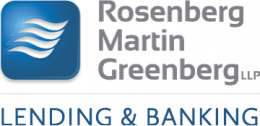Trends in Commercial and Residential Real Estate
An uncertain political and economic environment may increase the perceived risk that lenders take when they loan funds against real estate. Identifying developing trends in commercial real estate can help a lender manage its risk and underwrite loans that are secured by properties that will hold or increase in value.
The lending and banking attorneys in the Maryland and Delaware offices of Rosenberg Martin Greenberg LLP have seen structural shifts in real estate markets for almost 30 years. We watch those markets closely to spot the trends that will affect the businesses of our lender clients and that can alter how commercial real estate loans are negotiated before the loan is closed and if the loan fails to perform as expected.
Regional Trends in the Mid-Atlantic Real Estate Market
The commercial real estate markets in Maryland and Delaware appear to be poised for healthy expansion.
Multi-family real estate developments have been hot.
Investors and developers continue to see strong growth in multi-family real estate developments in Baltimore, Annapolis, and elsewhere throughout Maryland as residents continue to shift away from owning their homes and move toward renting.
Job growth is strong.
Millennials migrating to urban environments have turned Baltimore into the country’ eighth largest growth destination. This trend is spurring the demand for apartments and an uptick in commercial office space.
Secondary markets are surging.
At the same time, residents are moving to smaller markets, including Annapolis and cities in Maryland and Delaware that have traditionally been viewed as second-tier locations. This trend will increase demand for both residential and commercial real estate in those cities.
Real Estate Trends and the Capital Markets
Investors who perceive the equities markets to be overvalued are eyeing real estate.
Investment capital is abundant, but is being cautiously deployed.
Investors continue to demonstrate their willingness to shift capital into real estate projects, but they are showing greater selectivity and are more rigorous in performing due diligence. Asset-based lenders and loan syndicators that anticipate this rigor may experience fewer problem loans in the future.
Local banks will see greater lending activity.
Regulatory constraints on large national banks continue to create openings for local banks and lending institutions that have more intimate knowledge of local markets and better relationships with local builders and developers. Local lenders can better capitalize on these opportunities by joining forces with regional law firms and support teams that know the local markets and have strong connections in them.
Boom-bust economic cycles are smoothing out.
Both national and regional capital markets have grown inured to periods of overheated growth followed by contractions that wipe out opportunities for real estate borrowers and lenders. The current growth cycle appears more likely to end in a softer landing, with slower growth and without the panic that permeated the capital markets after 2007. Lenders will still need to protect themselves when real estate and other asset-based loans do not perform as expected. Working with a legal team that understands the state of the capital markets will provide greater assurances against losses from bad loans.
Work With a Leading Real Estate Finance Team
The real estate finance & lending attorneys at Rosenberg Martin Greenberg closely follow the trends in commercial and residential real estate in Maryland, Delaware, and throughout the mid-Atlantic region in order to provide knowledgeable and insightful legal services for their clients that lend investment capital secured by commercial real estate. Please contact our Baltimore offices for more information on how our lending and banking legal group can assist you to structure real estate or other asset-based loans or to secure your creditor’s rights when an existing loan has not performed as anticipated.
